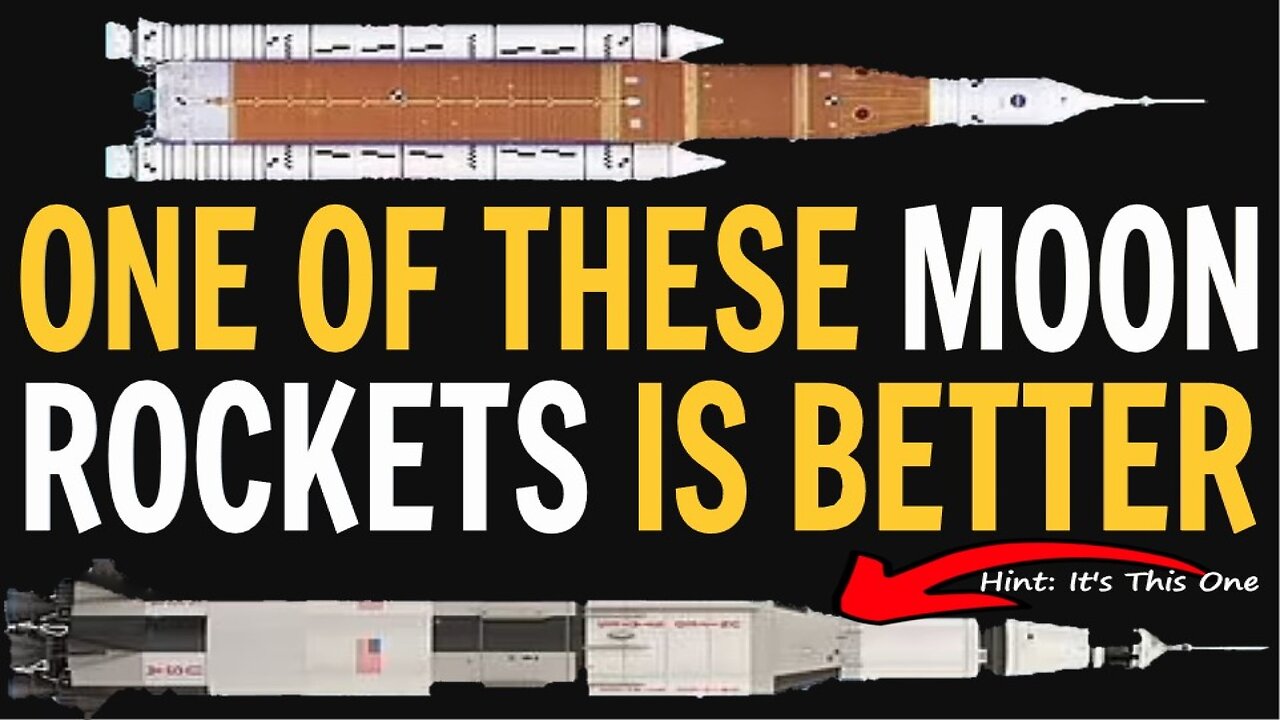Premium Only Content

NASA’s Lunar Legacy: A Comparative Analysis of the Saturn V and Space Launch System SLS Moon Rockets
Please Support The Channel
50% of all channel support (after fees & tax) will go to a private Moon mission
Patreon: https://www.patreon.com/user?u=37594401
Buy Me A Coffee?: https://www.buymeacoffee.com/whats.next
Donate With Cash App: https://cash.app/$YTpayments
In this captivating YouTube short, we will delve into NASA’s rich history of lunar exploration by comparing and contrasting the awe-inspiring Saturn V moon rocket and its successor, the Space Launch System (SLS). Both rockets represent monumental achievements in human spaceflight, with the Saturn V paving the way for the United States’ first manned lunar landing in 1969, and the SLS poised to carry us back to the Moon as part of NASA’s Artemis program.
Saturn V: The Saturn V rocket, developed during the 1960s as part of President John F. Kennedy’s ambitious goal to land a man on the Moon before the end of that decade, was an engineering marvel. Standing at an impressive height of 363 feet (109.7 meters), it was the tallest, heaviest, and most powerful rocket ever built at that time. The Saturn V consisted of a central third stage (S-IVB), three liquid-fueled first stages (S-IC), and an Apollo spacecraft on top. This colossal machine generated a staggering 7.5 million pounds (34 MN) of thrust at liftoff, propelling astronauts to escape Earth’s gravity and embark on their historic journey to our celestial neighbor.
Space Launch System (SLS): Fast forward to present day, NASA has initiated development of its next giant leap in lunar exploration: the Space Launch System (SLS). Designed to be even more powerful than its predecessor, this heavy-lift launch vehicle is expected to generate a mind-boggling 8.8 million pounds (39.8 MN) of thrust at liftoff when using its five RS-25 engines in their upgraded configuration. The SLS is also taller than the Saturn V, measuring 322 feet (98 meters) in height when fully assembled with its Orion spacecraft on top. This new powerhouse will play a crucial role in carrying humans back to the Moon under NASA’s Artemis program and eventually pave the way for missions beyond our solar system.
Comparative Analysis: Although both rockets share some similarities such as their heavy-lift capabilities and their role in advancing human spaceflight, there are significant differences between them that make each one unique in its own right. For instance, while both use liquid hydrogen and liquid oxygen as fuel components, improvements in engine technology have led to increased efficiency for the SLS compared to its predecessor. Additionally, advancements in materials science have resulted in lighter structures for various components within the SLS design – making it more fuel efficient overall despite being larger than its predecessor. Furthermore, while both rockets were designed for manned missions to orbit or beyond Earth’s atmosphere, only the SLS is currently being developed with lunar exploration specifically in mind due to its immense power capabilities required for deep space missions involving large payloads or extended stays away from Earth.
-
 0:46
0:46
Dr Disrespect
11 hours agoIt's not just a stream... it's an experience
295K1.64K -
 5:45:38
5:45:38
80sKiid
6 hours ago $17.25 earnedFirst stream on RUMBLE!!!!!
62.4K2 -
 3:56:31
3:56:31
JakeParker
6 hours ago $12.60 earnedJakeParker is LIVE on Rumble
43.7K -
 LIVE
LIVE
SpartakusLIVE
7 hours ago $21.42 earnedThe Duke rallies squad for LAUGHS into the night with a SMATTERING of TOXIC banter
1,792 watching -
 1:03:51
1:03:51
Flyover Conservatives
1 day agoGeneration Z’s Revolution: 17 Year Old Author on the Return of Faith, Family, and the End of Feminism - Hannah Faulkner; Economic Update - Dr. Kirk Elliott | FOC Show
32.2K2 -
 1:12:43
1:12:43
Adam Does Movies
10 hours ago $16.89 earnedMoviegoers Are Singing Now! + Lilo & Stitch + Sonic 3 - LIVE!
70K7 -
 1:26:05
1:26:05
Donald Trump Jr.
12 hours agoRegime Media Imploding: What’s Next for MSNBC? Plus Michael Knowles & Alex Marlow | TRIGGERED Ep.194
220K205 -
 37:26
37:26
Glenn Greenwald
10 hours agoGlenn Takes Your Questions: On Trump's Cabinet, The G20 Summit, and More | SYSTEM UPDATE LOCALS SPECIAL
85.5K34 -
 2:10:20
2:10:20
We Like Shooting
17 hours ago $2.14 earnedWe Like Shooting 586 (Gun Podcast)
21K1 -
 52:14
52:14
Uncommon Sense In Current Times
12 hours ago $0.65 earned“Pumpkin Pie Politics: Bridging the Thanksgiving Divide to Protect The Family"
15.7K1